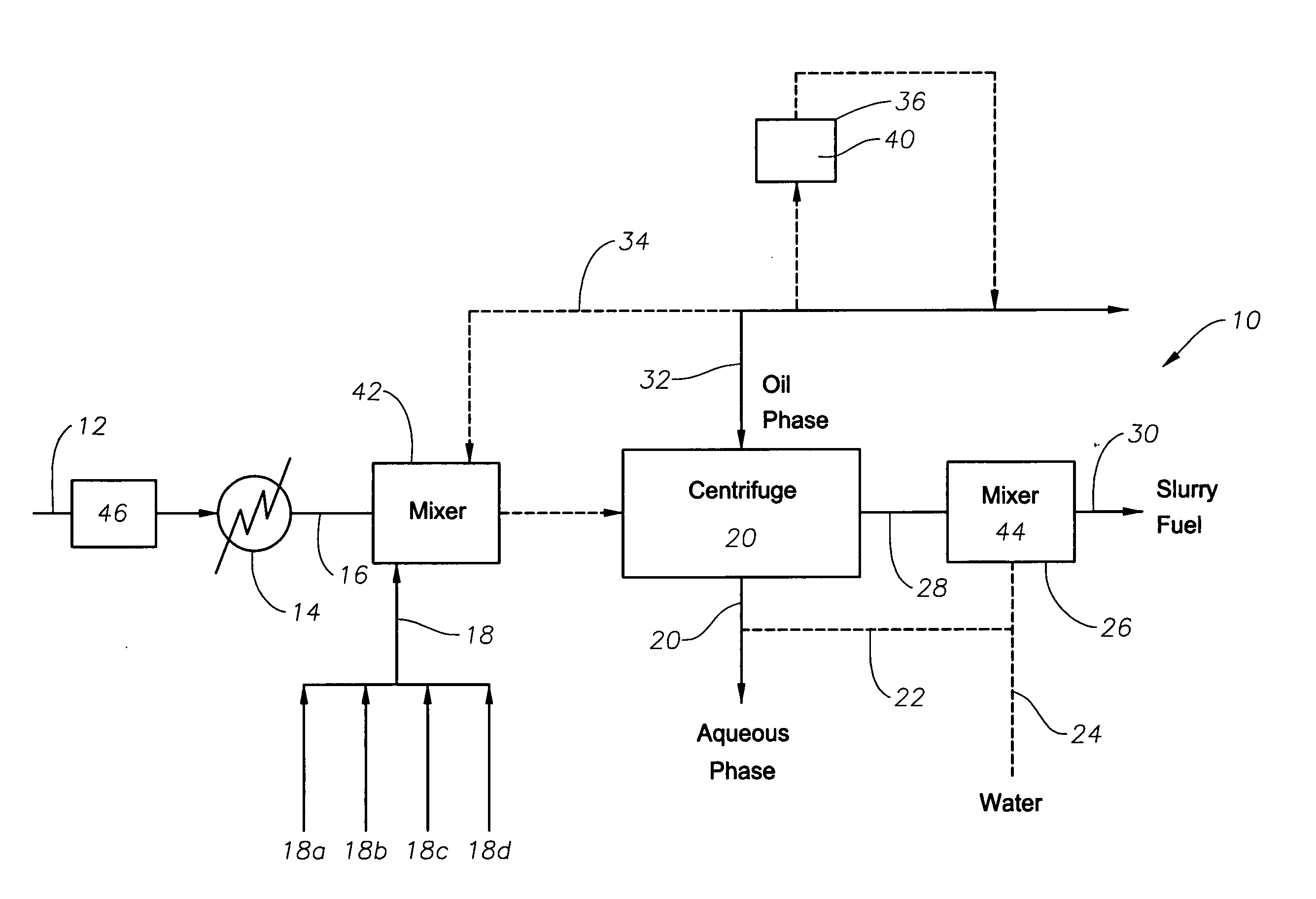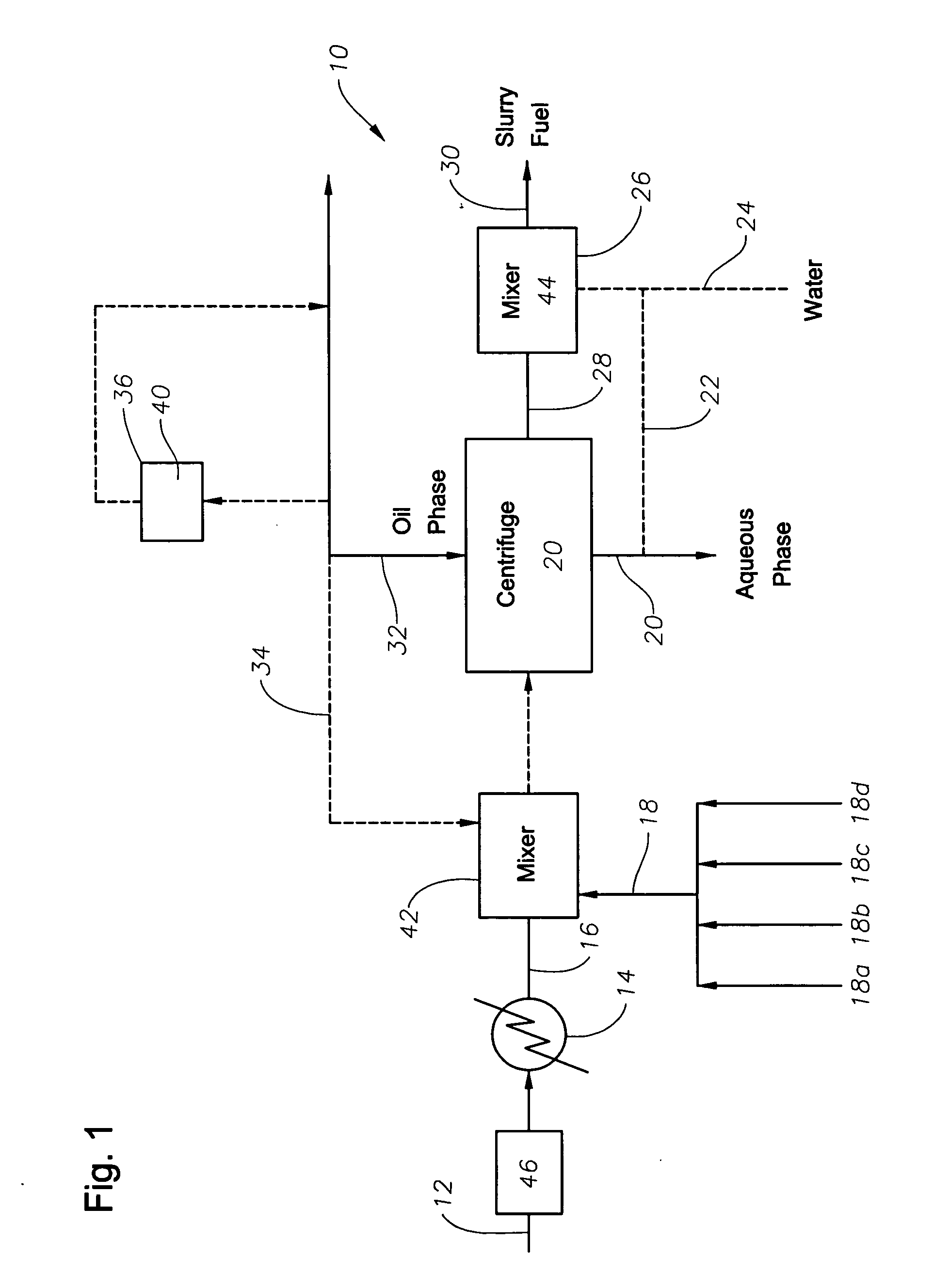Method for utilizing hydrocarbon waste materials as fuel and feedstock
a technology of hydrocarbon waste materials and feedstock, which is applied in the direction of hydrocarbon oil treatment, heating/cooling of settling tanks, centrifugal force sediment separation, etc., can solve the problems of affecting the operation of the company
- Summary
- Abstract
- Description
- Claims
- Application Information
AI Technical Summary
Benefits of technology
Problems solved by technology
Method used
Image
Examples
Embodiment Construction
[0019] The present invention advantageously provides a method of utilizing a petroleum waste stream having an API gravity varying from about 5 to about 30 as a fuel source. Table I includes an example composition for petroleum waste stream.
TABLE IComponentFeed wt. %, moisture free basisS1-7 C70-87 H7-10N0.1-2 H2O (uncentrifuged)5-50Density (API gravity)5-30Total Distillate (−524 C.)20-60 % Asphaltenes10-40
[0020] Referring to FIG. 1, as an embodiment of the present invention, the method preferably includes the step of heating hydrocarbon waste stream 12 to a preferable preselected temperature range of between about 30° C. and about 100° C. in the absence of air. This step of heating lowers viscosity of hydrocarbon waste stream 12 creating warmed hydrocarbon waste stream 16. The step of heating hydrocarbon waste stream 12 more preferably includes heating hydrocarbon waste stream 12 to a heated temperature within a range of about 50° C. to about 100° C.
[0021] After being heated, w...
PUM
| Property | Measurement | Unit |
|---|---|---|
| Temperature | aaaaa | aaaaa |
| Temperature | aaaaa | aaaaa |
| Temperature | aaaaa | aaaaa |
Abstract
Description
Claims
Application Information
 Login to View More
Login to View More - R&D
- Intellectual Property
- Life Sciences
- Materials
- Tech Scout
- Unparalleled Data Quality
- Higher Quality Content
- 60% Fewer Hallucinations
Browse by: Latest US Patents, China's latest patents, Technical Efficacy Thesaurus, Application Domain, Technology Topic, Popular Technical Reports.
© 2025 PatSnap. All rights reserved.Legal|Privacy policy|Modern Slavery Act Transparency Statement|Sitemap|About US| Contact US: help@patsnap.com


